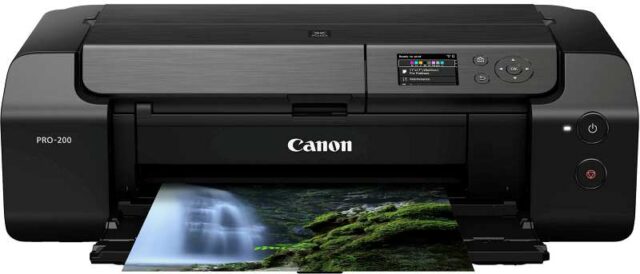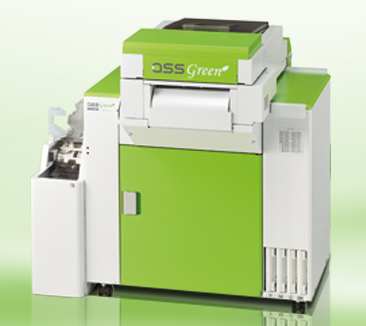The accepted wisdom when comparing dye and pigment-based inkjet printers is that, over a whole range of parameters, pigment should be the choice of professional image makers. After all, most wide-format printers targetted at professional photographers and labs are pigment-based, and those large inksets used in pigment-based printers expand the colour gamut.

But printing technology is a moving target, and what was true say, five years ago, ain’t no longer necessarily so, according to leading independent specialist Keith Cooper, (Northlight Images), who has reviewed just about every professional-grade inkjet printer released over the last 10 years or so.
‘At one level I can point to the fact that all large format photo/art printers and more expensive models use pigment inks and consider the question answered,’ he wrote addressing the issue. ‘However, amongst the printers I’ve looked at recently are the Epson XP-15000 and Canon PRO-200, both using dye based inks. It’s as a result of this that I’ve found reasons to question the “pigment is best” orthodoxy.
‘As with most such questions, the answer is “It depends”…’
He cites the Epson Surecolor D700 ‘dry minilab’ – since replaced in the lineup by the D860, with an upgrade on its way – as an interesting commercial print option which uses a dye-based, six colour inkset. ‘If you need lots of “standard size” prints then it’s rather good,’ he says.

Printers such as this and Epson-manufactured, re-badged Fujifilm versions, as well as the higher throughput Noritsu Green inkjet range, have quietly replaced most of the installed base of silver halide minilabs across the country over the past few years. If dye-based photographic prints are inferior, it’s certainly not in the eyes of the millions of Australians who pay for them, and the discerning specialists who produce them!
Looking at the Canon PRO200 and the Epson XP15000, his conclusion was that for some applications and on some measures such as cost, dye is superior; for others, pigment is best; and for the rest, it’s pretty well a draw.
Running through a range of criteria he found that:
– Dye-based inks have in the past been known to fade in a matter of weeks, and current cheap third-party dye-based inks continue to be unreliable, so if archival quality is important, pigment has the edge. It’s not as clear cut as it was in the past however: ‘A lot of progress has been made in this respect and with modern papers and inks it’s perfectly possible that dye-based prints could outlive any individual’;
– Dye-based inks tend to be cheaper than pigment-based inks;
– Dye-based inks look glossier on glossy stock: ‘Dyes sink into the paper and you are seeing the full gloss sheen of the surface, whilst pigment inks tend to sit on the surface, and you see a combination of their natural glossiness and the paper sheen.’ Moreover, pigment inks can be subject to ‘gloss differential’ – which is why some pigment-based systems use an added clear coat. Dye-based inks can also deliver deeper blacks with some glossy papers;
– On lustre and semi-gloss papers, pigment inks are able to better display their generally wider colour gamut;
– Some pigment inks have issues with bronzing – inks taking on a different colour reflective sheen;
– Pigment inks perform well using bartya papers, while this is probably the application in which dye-based inks are weakest, and ‘rarely achieve the density (depth of colour/black) possible with pigment ink sets’;
– With matte art papers including thick cotton rag based paper, matter black rather than photo black is needed when using pigment inks, while dye-based inks can deliver blacks which exceed the density of most pigment inks;
– Pigment inks are best for black & white printing, where with dye-based systems, colour tints show up under different lighting.
If you are looking for reliable reviews and information on inkjet printing technology free of marketing spin, Keith Cooper’s photography blog is well worth a visit.
This article was based on a video and article produced by Keith: http://www.northlight-images.co.uk/dye-inks-or-pigment-inks-for-photo-printing/





Be First to Comment